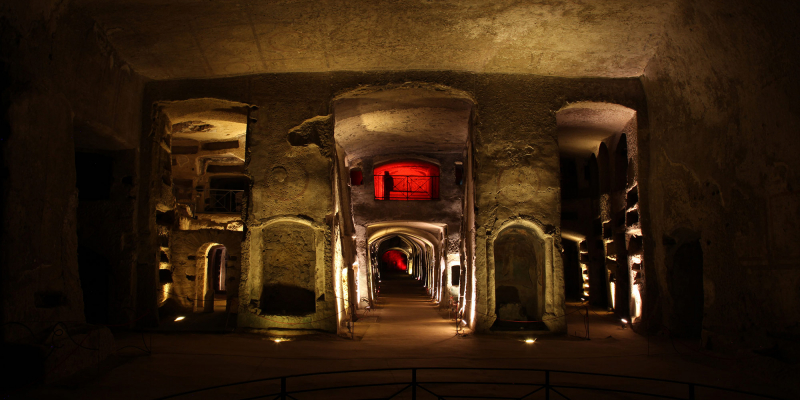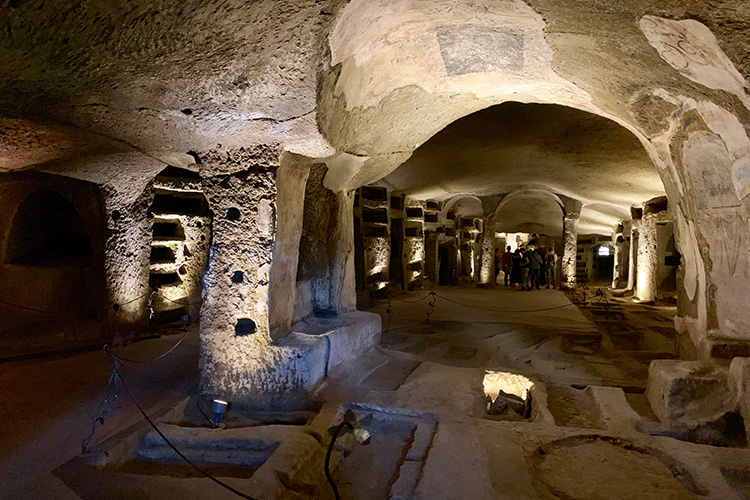Catacombs of San Gennaro

The San Gennaro Catacombs, the largest in southern Italy, are located beneath one of Naples' most populated and distinctive neighborhoods, and they represent an important part of the city's history: that of San Gennaro, the city's protector saint, whose body was laid to rest in these catacombs, which date back to the 5th century. The catacombs were a pilgrimage site from that time until the end of the ninth century. They were only rediscovered in the 1600s, after being lost for a long time.
The Catacombs of San Gennaro were divided into two levels, one on top of the other. Their initial nucleus dates from the late second to early third centuries. In subsequent centuries, ambulacra, or porticoed passageways, grew outward from their lower entrance. The upper level, which begins with an antique "upper vestibule", is notable for its end-of-the-century murals and the little cripta dei vescovi or Bishops' Crypt (near Gennaro's grave) where Naples' first bishops are buried. Meanwhile, the magnificent "basilica maior" is the result of extensive alterations to surrounding rooms, which were completed when San Gennaro was transferred in the fifth century. The basilica maior, built completely of tuff rock, has three naves and a collection of frescoes from the fifth and sixth centuries. Today, access to the catacombs is possible from the piazza hosting the Basilica dell'Incoronata Madre del Buonconsiglio in Capodimonte, and from the Basilica di San Gennaro extra moenia (outside the walls).
Address: Via Tondo di Capodimonte, 1380136 Naples
Website: catacombedinapoli.it






